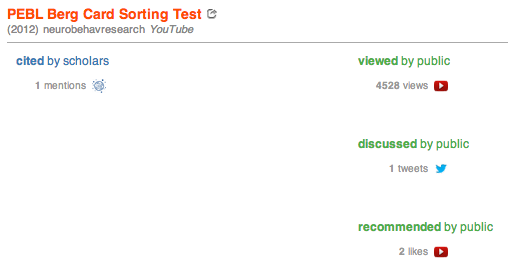As you’ve noticed, we’ve been focusing hard on new features for ImpactStory profiles. Today we announce another step towards a great impact profile experience: a new, simple approach to embedding ImpactStory data on your own website.
An “Embed” link at the top of your profile provides simple HTML code to include in your website. Just add the line to any webpage and, poof! Your whole profile is there, with all of your products and their impacts. You can see it in action on Ross Mounce’s website.
We’ll be decommissioning old-style embedding badges in a month, on January 17th 2014, to streamline our efforts. We know many of you have included these stand-alone badges on your journal, lab, and personal websites — we’ve loved seeing them there! We hope you transition to our new embedding model, if it works for you.
We’re deeply committed to great embedding for ImpactStory profiles, because, well, it’s your profile. It should live where you want it to, and look how you want it to look. So we’re excited about continuing to improve the embedding experience. Let us know at feedback.impactstory.org what additional features would help you share your ImpactStory profile in all the ways you want to!
 We’re big fans of
We’re big fans of 


